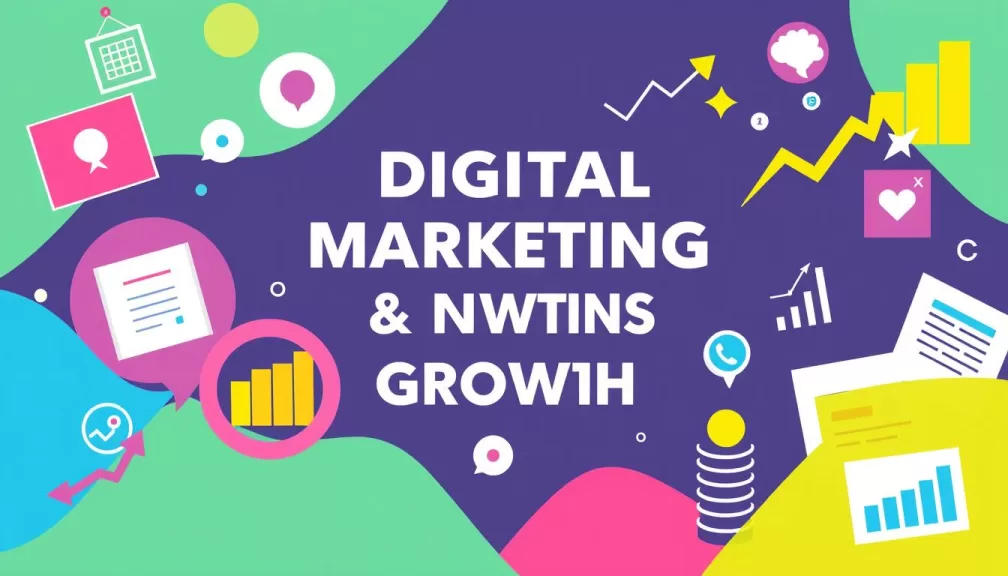The world is on the cusp of a technological revolution, driven by artificial intelligence and its myriad applications. As we step into 2025, the importance of AI tools is becoming increasingly evident, transforming industries and creating new opportunities.
The rapid evolution of technology has made AI an integral part of our personal and professional lives. With numerous tools emerging, it’s crucial to stay updated on the latest advancements.
This comprehensive guide highlights the top AI tools of 2025, showcasing their potential to reshape the world and revolutionize workflows across different sectors. Whether you’re a business or an individual, these intelligence-driven tools are designed to enhance productivity and efficiency.
Key Takeaways
- Discover the top AI tools that will dominate the technological landscape in 2025.
- Learn how artificial intelligence is transforming various industries.
- Understand the significance of staying updated with the latest AI tools.
- Explore how these tools can enhance personal and professional productivity.
- Get insights into the future of AI and its potential applications.
The Evolution of AI Tools in 2025
As we edge closer to 2025, the evolution of AI tools is becoming increasingly pronounced. The global generative AI market size is predicted to grow to $356.10bn by 2030, highlighting its growing influence. This significant impact is fueled by the ability of these tools to automate tasks, enhance creativity, and optimize processes.
How AI Technology Has Transformed in Recent Years
The rapid development of AI technology has been remarkable, transitioning from basic automation to sophisticated generative models. Initially, AI tools were designed for specialized applications, but they have evolved into versatile solutions capable of handling complex tasks. Several technological breakthroughs have enabled more powerful and accessible AI tools in recent years.
- Advanced data processing capabilities have expanded, allowing AI to work with increasingly complex datasets.
- The shift from rule-based systems to truly adaptive learning has made AI intelligence more sophisticated.
- AI tools are now more integrated into various industries, transforming workflows and creating new possibilities.
These advancements have not only improved the performance of AI tools but have also made them more accessible to a wider audience. The ability to process and analyze large amounts of data has been a critical factor in this transformation.
The Growing Impact of AI Tools Across Industries
The impact of AI tools is being felt across various industries, including healthcare, finance, creative arts, and education. In the healthcare sector, AI is being used to diagnose diseases more accurately and quickly. In finance, AI tools are helping to detect fraudulent activities and manage risk.
In the creative arts, AI is enabling new forms of artistic expression, while in education, it is personalizing learning experiences. The business world is also witnessing a significant transformation, with AI tools being used to optimize processes and improve efficiency.
- AI adoption has accelerated in the past few years, leading up to 2025.
- The use of AI tools is creating new possibilities and transforming workflows.
- Industries are leveraging AI to enhance creativity, automate tasks, and optimize processes.
As AI continues to evolve, it is expected that its impact on various industries will only continue to grow, leading to new innovations and opportunities.
Understanding Generative AI Technology
Generative AI represents a new frontier in artificial intelligence, where machines are not just analytical but also creative. This technology has the potential to revolutionize various industries by enabling the generation of new, original content.
What Makes Generative AI Different
Generative AI tools are designed to create entirely new data, unlike traditional AI systems that analyze existing information. This is achieved through complex algorithms and models trained on vast datasets, including text, images, and audio.
The key differentiator lies in their ability to learn patterns and relationships within the training data, and then use this knowledge to generate novel outputs. For instance, generative AI can produce realistic images, compose music, or even write articles.
- Generate original content, such as images, videos, or text, based on learned patterns.
- Utilize complex algorithms and neural networks to process and generate data.
- Enable applications across various industries, from entertainment to healthcare.
As noted by experts, “The future of AI is not just about analyzing data, but about creating new possibilities.” This highlights the transformative potential of generative AI tools in shaping the future of technology and intelligence.
The Science Behind Modern AI Tools
The science behind generative AI involves sophisticated models, such as transformers and diffusion models, which are capable of learning from vast amounts of data. These models are trained using complex algorithms that enable them to understand and replicate the patterns found in the training data.
The training process for generative AI is both intricate and computationally intensive. It involves feeding the model with a massive dataset, allowing it to learn and adjust its parameters to better generate new content that mirrors the original data.
One of the critical challenges in developing generative AI is balancing creativity with accuracy. While the goal is to generate novel content, it’s equally important that this content is coherent and relevant. Achieving this balance requires advanced techniques and fine-tuning of the AI tools.
“The development of generative AI is a significant milestone in the field of artificial intelligence, marking a shift towards more creative and capable machines,” as highlighted by industry leaders. This underscores the importance of continued innovation in this area.
Top 10 AI Tools 2025 for Revolutionizing Your Workflow
The top 10 AI tools of 2025 are not just enhancing workflows; they’re revolutionizing the very fabric of how we work. As we explore these cutting-edge technologies, it’s essential to understand what makes them stand out and how they can be leveraged to improve productivity and efficiency.
Selection Criteria for Our List
To curate our list of the top 10 AI tools for 2025, we considered several key factors. These included versatility, user experience, innovation, and practical applications. We evaluated each tool based on its ability to adapt to different tasks, its ease of use, the novelty of its features, and its real-world applications.
- Versatility: How well can the tool adapt to various tasks and industries?
- User Experience: How intuitive and user-friendly is the tool?
- Innovation: Does the tool introduce new or groundbreaking features?
- Practical Applications: How effectively can the tool be applied in real-world scenarios?
Our selection process involved a thorough analysis of the AI landscape, categorizing tools into AI Assistants, Video Generation, Image Generation, Writing Tools, and Coding Assistants. This categorization helped us identify the most impactful tools across different categories.
Key Benefits of Implementing These AI Tools
Implementing these top 10 AI tools can dramatically improve productivity across various workflows. By automating routine tasks, enhancing creativity, and providing insightful data analysis, these tools enable professionals to focus on high-value tasks. The wide range of AI tools available means that there’s something for every need, from content creation to coding assistance.
The benefits of using these AI tools are multifaceted:
- Enhanced Productivity: Automating mundane tasks allows for more time on strategic activities.
- Increased Efficiency: AI tools streamline processes, reducing the time and effort required to complete tasks.
- Improved Accuracy: AI minimizes the risk of human error, ensuring more accurate outcomes.
- Creative Boost: Tools like image and video generation AI can spark creativity and open new avenues for content creation.
By understanding the use cases and capabilities of these AI tools, individuals and organizations can make informed decisions about which tools to implement. The subsequent sections will delve into each of the top 10 AI tools, providing a detailed analysis of their features, applications, and benefits.
ChatGPT-4o: The Ultimate AI Assistant
With its advanced multimodal capabilities, ChatGPT-4o is redefining the landscape of AI assistants. This latest iteration from OpenAI brings significant improvements over its predecessors, making it an indispensable tool for various applications.
Advanced Features and Capabilities
ChatGPT-4o boasts several key features that make it stand out as the ultimate AI assistant. Its multimodal capabilities allow users to interact with the tool using both text and images, enabling a more comprehensive and flexible user experience.
The tool can process and respond to complex queries, retaining context over time to provide personalized responses. This feature is particularly useful for users who require detailed and relevant information across multiple interactions.
Furthermore, ChatGPT-4o’s ability to handle both text and visual data makes it an versatile tool for a wide range of applications, from creative writing to data analysis.
Use Cases and Applications
The versatility of ChatGPT-4o makes it suitable for various use cases across different industries and personal applications. For instance, content creators can leverage its capabilities for generating high-quality content, while businesses can use it for data analysis and customer service.
In educational settings, ChatGPT-4o can serve as a valuable resource for students and educators alike, providing detailed explanations and assisting with research tasks.
Additionally, its ability to retain context and personalize responses makes it an effective tool for customer support, enhancing user experience and improving response times.
Pricing Plans and Accessibility
OpenAI offers ChatGPT-4o through various pricing plans, catering to different user needs and budgets. The free tier provides limited access to GPT-4o, while the ChatGPT-4o mini is available for unlimited use.
For users requiring more advanced features, the Plus plan is available at $20/month, offering enhanced capabilities and priority access to new tools.
For businesses and heavy users, the Pro plan at $200/month provides comprehensive access to the latest tools and features, along with priority support.
By offering a range of pricing options, OpenAI ensures that ChatGPT-4o is accessible to a broad audience, from individual users to large enterprises.
Claude 3.5: Precision and Personality in AI Conversations

In the realm of AI assistants, Claude 3.5 stands out for its ability to balance technical accuracy with a warm, conversational tone. This AI tool is designed to provide precise responses while maintaining a nuanced understanding of complex queries, making it an invaluable resource for various applications.
Standout Features and Strengths
Claude 3.5 Sonnet is particularly strong in coding tasks and code reviews, offering precise responses with a nuanced understanding of programming. Its ability to process complex queries and maintain context throughout conversations is a significant advantage. Additionally, Claude 3.5 has a warmer, more personable tone compared to other AI assistants, making interactions feel more natural and engaging.
The model’s exceptional performance with code and technical content is one of its standout features. It can generate high-quality text content across various formats, from technical documentation to creative writing. This versatility makes Claude 3.5 a valuable tool for developers, writers, and businesses alike.
Best Applications for Claude
Claude 3.5 is ideal for a range of applications, from coding assistance to creative writing. Its ability to understand and respond to complex queries makes it particularly useful for tasks that require a deep understanding of context and nuance. For instance, developers can leverage Claude for code reviews and debugging, while writers can use it to generate ideas or complete drafts.
One of Claude’s significant strengths is its ability to outperform other AI assistants in specific use cases. For example, its precision in coding tasks and ability to maintain a conversational tone make it an excellent choice for customer service applications.
Pricing Structure and Value
Claude 3.5 offers a freemium model, with limitations on the free tier. Users may hit response and rate limits faster than expected, which can be a constraint for heavy users. The Pro plan, priced at $20/month, offers significant upgrades, including increased response limits and additional features.
For individuals and businesses considering Claude 3.5, the value proposition lies in its unique blend of precision and personality. While the free tier can be useful for light users, the Pro plan is likely to be more beneficial for those who require more extensive interactions with the AI tool.
Gemini: Google’s Powerful AI Integration

Gemini represents a significant leap forward in AI technology for Google users. It is designed to integrate seamlessly into the Google ecosystem, providing a natural extension of the system on Android devices and enhancing Google Workspace.
Core Capabilities and Google Ecosystem Integration
Gemini’s core strength lies in its ability to process both text and image data, making it a versatile tool for various applications. Its integration with Google Workspace means that users can leverage its capabilities directly within the tools they use daily.
The features of Gemini include handling complex tasks such as content creation and information analysis. This makes it an invaluable asset for users looking to streamline their workflow and enhance productivity.
Practical Applications and Use Cases
Gemini’s practical applications span across personal productivity, business, and creative fields. For instance, it can be used for document analysis and creative brainstorming, providing users with a powerful tool for generating ideas and analyzing large volumes of data.
In business settings, Gemini can assist with tasks such as content generation and data processing, making it a valuable asset for companies looking to automate and streamline their operations.
Free vs. Advanced Pricing Options
Gemini offers both free and advanced pricing options. The free Basic version uses the 1.5 Flash model, while Gemini Advanced ($19.99/month) adds more powerful models like 1.5 Pro and Gemini-Exp-1206 for complex tasks.
The advanced features in Gemini Advanced make it suitable for users who require more sophisticated capabilities, such as analyzing texts up to 1,500 pages. The pricing structure is designed to cater to different user needs and budgets.
By understanding the different pricing options and the features they offer, users can make informed decisions about which version of Gemini best suits their needs.
Midjourney: Revolutionary AI Image Generation
With its sophisticated AI algorithms, Midjourney is revolutionizing the way we create and interact with visual content. This cutting-edge tool is known for generating incredibly creative and realistic images from text-based prompts.

Image Generation Capabilities and Controls
Midjourney’s image generation capabilities are both advanced and highly customizable. Users can refine their generated images by specifying styles, materials, and even particular artistic movements. This level of control allows for the creation of highly tailored and unique visual content.
The tool offers various controls to edit and refine generated images, including adjusting composition and details. This makes Midjourney particularly useful for professionals looking to create precise and high-quality visuals.
Key Features: Advanced AI algorithms, customizable image generation, precise control over image details.
Creative and Professional Applications
Midjourney has a wide range of applications across different industries, including art, design, marketing, and entertainment. Its ability to generate high-quality images from text prompts makes it an invaluable tool for creative professionals.
Professionals can use Midjourney for product visualization, concept art, and creating marketing materials. The tool’s versatility and the quality of its output make it suitable for a variety of professional needs.
Examples of Use Cases: Product visualization, concept art, marketing materials, digital art creation.
Subscription Options and Accessibility
Midjourney offers flexible subscription plans starting at $10 per month, making it accessible to both individuals and businesses. The tool integrates with Discord, facilitating collaboration and community learning among users.
The Discord integration allows users to easily access the tool, share their creations, and learn from others within the community. This accessibility and the collaborative environment enhance the overall user experience.
Pricing Plans: Starting at $10 per month, with various tiers to suit different needs.
Synthesia: Professional AI Video Creation

Synthesia offers a cutting-edge solution for businesses looking to enhance their video content. As the leading AI video generator, Synthesia allows users to create realistic AI human avatars videos without needing cameras, microphones, or studios.
Video Generation Features and Options
Synthesia’s tool transforms text scripts into polished videos featuring realistic AI avatars. The platform offers a range of features, including customizable avatars, multilingual support, and template options, making it easy to produce high-quality content.
The features of Synthesia include:
- Over 230 digital avatars to choose from
- Support for 140+ languages
- Customizable templates for various video types
- Easy integration with existing content creation workflows
Business and Marketing Applications
Businesses use Synthesia for a wide range of applications, from internal communications and onboarding to customer support videos, personalized sales outreach, B2B marketing content, explainer videos, and product demos.
Synthesia streamlines video content creation for businesses of all sizes, enabling them to produce professional-quality videos without the need for extensive resources or expertise.
Pricing Structure
Synthesia offers a flexible pricing structure to suit different business needs. The free plan allows users to generate up to 36 minutes of video per year, while paid plans start at $29 per month.
The pricing plans are designed to provide businesses with the flexibility to choose the option that best fits their content creation needs and budget.
By balancing professional quality with ease of use, Synthesia makes it possible for non-video professionals to create engaging content. Whether you’re looking to enhance your marketing strategy or improve internal communications, Synthesia’s AI video creation tool is an invaluable resource.
Runway ML: Advanced Video and Creative Tools
Runway ML offers a suite of AI-powered tools that are redefining the future of video content creation. With its cutting-edge technology, this platform is transforming how creators approach video editing, generation, and overall content strategy.

Video Editing and Generation Capabilities
Runway ML’s advanced AI capabilities enable sophisticated video editing and generation without requiring traditional video expertise. The platform includes features like text-to-video and image-to-video, allowing users to create video content from simple text prompts or images.
The Motion Brush feature enables users to add animations to specific parts of a video, while Camera Controls allow for adjustments in angles and focus, providing a high degree of creative control.
Additionally, the Inpainting feature can seamlessly remove or alter elements within a video, making it an invaluable tool for refining and perfecting video content.
Creative Workflow Integration
Runway ML is designed to integrate smoothly into the creative workflows of filmmakers, artists, and content creators. By providing advanced video editing and generation capabilities, the platform enables professionals to achieve high-quality output without the need for extensive traditional video editing expertise.
The platform’s tools are versatile, supporting a range of applications from professional filmmaking to social media content creation. This versatility makes Runway ML an attractive option for a wide range of creators.
By leveraging Runway ML’s features, creators can focus on the artistic aspects of their work, knowing that the technical aspects of video editing and generation are well-handled by the platform’s AI.
Pricing Tiers and Options
Runway ML offers flexible pricing plans to cater to different user needs, from casual creators to high-output professionals and teams. The Basic Plan provides 125 one-time credits for free, allowing users to try out the platform’s capabilities.
The Standard Plan ($12/month) is suitable for light use, while the Pro Plan ($28/month) offers more credits and features, making it ideal for regular users. For high-output creators or teams, the Unlimited Plan ($144/month) provides the highest level of service and support.
Additionally, a light version of Runway ML is integrated into Canva, providing users with an accessible entry point into AI-powered video creation.
GitHub Copilot: AI-Powered Coding Assistant

GitHub Copilot, an AI-powered code completion tool, is changing the landscape of software development. Created by GitHub in partnership with OpenAI, this innovative tool suggests code snippets and functions as developers type, helping them write code faster and more efficiently.
Code Generation and Assistance Features
GitHub Copilot’s code generation capabilities are its standout feature. It provides contextual code suggestions based on the code being written, supporting multiple programming languages and integrating directly into development environments. This means that whether you’re working on a small project or a large-scale application, Copilot can assist you by suggesting relevant code snippets and completing functions.
The tool’s ability to understand the coding context allows it to provide accurate and relevant suggestions, making it an invaluable resource for developers. With support for a wide range of programming languages, GitHub Copilot is versatile and can be used across various projects and development environments.
Developer Productivity Benefits
The significant productivity benefits of GitHub Copilot are evident in its ability to reduce the time spent on repetitive coding tasks. By automating these tasks, developers can focus on more complex and creative aspects of their projects, boosting overall efficiency and productivity.
For individual developers and development teams, GitHub Copilot helps maintain code quality and consistency across projects. This not only improves the reliability of the code but also enhances collaboration among team members by ensuring that coding standards are maintained.
Subscription Plans for Individuals and Teams
GitHub Copilot offers a range of subscription plans to suit different needs. The free basic plan is ideal for individual developers or small projects, while the team plan at $4 per user per month is designed for small to medium-sized teams. For larger organizations, the enterprise plan at $21 per user per month provides additional features and support.
By choosing the appropriate subscription level, different team sizes and organizations can maximize the value they get from GitHub Copilot. Whether you’re working on personal projects or are part of a large development team, there’s a plan that fits your needs.
Jasper: Comprehensive AI Content Creation

Jasper is emerging as a leading AI platform for professional content creation across multiple formats. This powerful tool is designed to help businesses produce high-quality content efficiently, leveraging advanced AI technology to streamline content generation workflows.
Content Generation Capabilities
Jasper’s AI writing assistant offers extensive text generation capabilities, from blog posts and marketing copy to social media content and video scripts. The platform’s user-friendly interface features various templates that simplify the content creation process, allowing users to produce engaging content with minimal effort.
The tool integrates with SEO tools for content optimization, ensuring that the generated content is not only high-quality but also search engine friendly. Additionally, Jasper provides plagiarism checks and grammar suggestions to maintain the highest standards of content quality.
With Jasper, users can create a wide range of content types, including blog posts, marketing copy, social media captions, and video scripts. The platform’s versatility makes it an invaluable asset for marketing teams and businesses looking to maintain a consistent brand voice across different content channels.
Marketing and Business Applications
Jasper streamlines content creation workflows for marketing teams and businesses, enabling them to produce high-quality content at scale. The platform’s ability to maintain brand voice consistency across different content types is particularly valuable, as it ensures that all marketing materials convey a unified message.
Businesses can use Jasper for various marketing applications, including creating website copy, email campaigns, and product descriptions. The tool’s capacity to generate high-quality content quickly allows businesses to respond rapidly to market trends and consumer needs.
By automating certain aspects of content creation, Jasper enables marketing teams to focus on strategic planning and creative direction, ultimately improving the overall efficiency of their marketing efforts.
Pricing Plans and ROI
Jasper’s pricing plans are designed to accommodate different business needs, starting at $49/month for basic features. The cost increases based on word credits and additional features, allowing businesses to scale their content creation capabilities as needed.
To calculate the return on investment (ROI) of using Jasper, businesses can consider factors such as the time saved on content creation and the improvement in content quality. By streamlining content generation workflows, Jasper enables businesses to produce more content in less time, potentially leading to increased marketing effectiveness and revenue.
By balancing automation with customization, Jasper ensures that businesses can create authentic, high-quality content that resonates with their target audience. This balance is crucial for maintaining a strong brand voice and achieving marketing goals.
DeepSeek: Affordable Advanced AI Models
With DeepSeek, developers and businesses can now leverage cutting-edge AI technology without breaking the bank. DeepSeek has emerged as a significant player in the AI landscape by offering advanced AI models at an affordable price, making it an attractive option for those looking to integrate AI into their workflows without the hefty price tag associated with premium AI tools.

V3 and R1 Model Capabilities
DeepSeek’s latest offerings, the V3 and R1 models, have garnered attention for their impressive capabilities. The V3 model provides straightforward coding suggestions, making it a valuable tool for developers looking for efficient coding assistance. On the other hand, the R1 model, launched in January 2025, delivers comprehensive analysis and better suggestions compared to its competitors, positioning it as a strong competitor to premium AI models like ChatGPT’s o1.
The R1 model’s ability to provide detailed analysis and suggestions marks a significant advancement in AI technology, particularly for coding and technical applications. This model’s open-source nature and cost-effectiveness have made it a favorite among developers who require powerful AI tools without the high costs.
Coding and Technical Applications
DeepSeek’s AI models are particularly valued for their performance in coding and technical applications. The V3 model’s straightforward approach to code suggestions makes it an efficient tool for developers working on complex projects. Meanwhile, the R1 model’s comprehensive analysis capabilities offer developers a deeper understanding of their code, enabling them to make more informed decisions.
For technical teams, DeepSeek’s models provide a cost-effective solution for coding tasks, allowing them to allocate resources more efficiently. The models’ ability to generate high-quality code quickly can significantly reduce development time, making DeepSeek a valuable asset for businesses looking to accelerate their development processes.
Free Access and API Pricing
One of the most compelling aspects of DeepSeek is its pricing model. The company offers free access to its V3 and R1 models on its website, making it accessible to a wide range of users. For developers and businesses that require more extensive integration, DeepSeek provides API access at a very low cost, ensuring that users can leverage the power of its AI models without incurring significant expenses.
The affordability of DeepSeek’s API, combined with the models’ capabilities, positions DeepSeek as a highly competitive option in the AI market. While its writing output may sometimes be less natural-sounding or repetitive compared to more expensive alternatives, the trade-off for affordability and efficiency makes DeepSeek an attractive choice for coding and technical applications.
Grammarly AI: Enhanced Writing and Communication

Grammarly AI has emerged as a leading tool for improving writing and communication effectiveness. This AI-powered writing assistant helps users enhance their writing quality across various contexts and platforms.
Writing Improvement Features
Grammarly AI offers comprehensive writing improvement features that go beyond basic grammar checking. It analyzes text for clarity, engagement, delivery, and style adjustments, providing contextual suggestions based on the document type and audience.
The tool’s advanced features help users refine their writing skills by identifying complex sentences, suggesting alternative phrases, and improving overall readability.
With Grammarly AI, users can ensure that their content is not only grammatically correct but also engaging and effective in conveying the intended message.
Professional and Educational Applications
Grammarly AI has numerous professional applications across business communication, marketing content, and technical writing. It helps professionals produce high-quality content that is clear, concise, and free of errors.
In educational settings, Grammarly AI is a valuable tool for students, researchers, and academic institutions. It assists in improving academic writing, ensuring that papers and assignments are well-structured and polished.
The platform’s ability to integrate with various writing environments and workflows makes it a versatile tool for both professional and educational use.
Free vs. Premium Options
Grammarly AI offers both free and premium options, catering to different user needs. The free version provides basic writing improvement features, while the premium subscription unlocks advanced features and capabilities.
The premium options are designed for individual writers, teams, and enterprise organizations, offering customized solutions based on specific requirements.
By comparing the free and premium features, users can determine which option best suits their writing needs and budget.
Grammarly AI’s pricing plans are structured to accommodate various user categories, from individual writers to large enterprises. The platform’s flexibility and range of features make it an attractive choice for anyone looking to enhance their writing and communication skills.
Comparing AI Tools: Finding the Right Fit for Your Needs
In the vast and diverse world of AI, finding the perfect tool requires a thorough understanding of your specific requirements. With so many options available, it’s essential to have a framework for evaluating and comparing these tools effectively.
Evaluating AI Tools Based on Your Requirements
When assessing AI tools, it’s crucial to consider several key factors that align with your specific needs. First, identify the primary purpose of the tool: Is it for content creation, data analysis, or perhaps customer service enhancement? Different tools excel in different areas, so understanding your main objective is vital.
Specialized capabilities versus general-purpose functionality is another critical aspect to consider. Some AI tools are designed for specific tasks, offering advanced features tailored to those tasks, while others provide a broader range of functionalities that might be useful but not as powerful in any one area.
The user experience and interface design also play a significant role in tool selection. An intuitive interface can significantly reduce the learning curve and improve productivity. Therefore, it’s essential to evaluate how user-friendly the tool is and whether it integrates well with your existing workflows.
- Assess the tool’s core capabilities and how they align with your needs.
- Consider the level of customization available and whether it meets your requirements.
- Evaluate the tool’s scalability and its potential to grow with your needs.
- Investigate the quality of customer support and available resources.
Different types of users—individuals, small teams, and enterprises—should approach tool selection with varying priorities. For instance, individuals might focus on cost-effectiveness and ease of use, while enterprises may prioritize scalability and integration capabilities.
Cost-Benefit Analysis of Premium vs. Free Options
Conducting a thorough cost-benefit analysis is vital when deciding between premium and free AI tool options. While free versions can be attractive, they often come with limitations in terms of features, support, or usage caps.
Premium options, on the other hand, typically offer more advanced features, better support, and greater flexibility. However, they require a financial investment, which must be justified by the benefits they provide.
To effectively compare these options, consider the following:
- Evaluate the additional features offered by premium versions and their value to your work.
- Assess the level of support provided with premium subscriptions.
- Consider the potential return on investment (ROI) for premium tools.
It’s also beneficial to test tools before committing to subscriptions whenever possible. Many providers offer trials or free versions that can give you a practical understanding of the tool’s capabilities and limitations.
Gathering information about tool performance beyond marketing claims is crucial. This can involve researching community feedback and real-world use cases to get a more accurate picture of how the tool performs in actual usage scenarios.
Implementing AI Tools in Your Workflow
The successful implementation of AI tools can revolutionize your workflow, enhancing overall performance. As organizations continue to adopt AI technologies, understanding how to effectively integrate these tools is crucial. This section will explore practical strategies for implementing AI tools, overcoming common challenges, and maximizing efficiency.
Integration Strategies for Maximum Efficiency
To get the most out of AI tools, it’s essential to have a clear integration strategy. This involves identifying the right entry points for AI in your existing processes. For instance, you can start by automating repetitive tasks such as email management or data entry. AI tools like ChatGPT-4o can help manage your inbox by drafting responses to common emails, while tools like Jasper can assist in generating content for marketing campaigns.
Combining multiple AI tools can create a comprehensive AI-enhanced workflow. For example, using Midjourney for image generation, Synthesia for video creation, and Grammarly AI for writing improvement can significantly enhance your content creation process. It’s crucial to select tools that complement each other and align with your business needs.
Here are some key strategies for integrating AI tools:
- Identify repetitive tasks that can be automated.
- Select AI tools that align with your business needs.
- Combine multiple tools to create a comprehensive workflow.
- Provide training to your team to ensure successful adoption.
For instance, a company might use GitHub Copilot to assist developers in coding, reducing the time spent on mundane tasks. Similarly, Runway ML can be used for advanced video editing, enhancing the creative process.
Overcoming Common Implementation Challenges
Implementing AI tools is not without its challenges. Common issues include resistance to change from team members, difficulty in integrating AI tools with existing systems, and measuring the ROI of AI implementations. To overcome these challenges, it’s essential to have a robust change management strategy in place.
One approach is to start small, piloting AI tools with a specific team or project before scaling up. This allows you to address any issues that arise in a controlled environment. Additionally, providing comprehensive training to your team can help alleviate concerns and ensure that everyone is comfortable using the new tools.
Change management strategies might include:
- Clear communication about the benefits of AI tools.
- Involving team members in the selection and implementation process.
- Providing ongoing support and training.
To measure the ROI of AI tool implementations, businesses can track key performance indicators (KPIs) such as productivity gains, cost savings, and improvements in customer satisfaction. For example, a company that implements AI-powered customer service tools might see a significant reduction in response times and an increase in customer satisfaction ratings.
| AI Tool | Primary Use | Benefits |
|---|---|---|
| ChatGPT-4o | Email Management | Increased productivity, faster response times |
| Jasper | Content Creation | Enhanced content quality, reduced creation time |
| Midjourney | Image Generation | Improved visual content, increased creativity |
“The best way to predict the future is to invent it.” – Alan Kay
This quote encapsulates the essence of implementing AI tools: by embracing and shaping technology, businesses can create a more efficient and innovative future.
The Future of AI Tools Beyond 2025
As we look beyond 2025, the landscape of AI tools is poised for significant transformation. The rapid evolution of artificial intelligence is driving innovations that will revolutionize various industries and aspects of our lives.
The next generation of AI tools will be characterized by more sophisticated models and enhanced learning capabilities. These advancements will enable AI tools to perform complex tasks with greater accuracy and efficiency.
Emerging Trends in AI Development
Several emerging trends are shaping the future of AI tools. One key trend is the development of more advanced multimodal capabilities, allowing AI to process and integrate multiple forms of data, such as text, images, and audio.
- More sophisticated reasoning and knowledge representation are being integrated into AI models.
- The growing importance of multimodal capabilities is enabling AI to handle diverse data types.
- AI tools are becoming more specialized while maintaining general capabilities.
The potential impact of quantum computing on AI tool development is significant. Quantum computing can enhance the processing power of AI, enabling more complex computations and faster data analysis.
| Trend | Description | Impact |
|---|---|---|
| Advanced Multimodal Capabilities | Integration of multiple data types (text, images, audio) | Enhanced data processing and analysis |
| Sophisticated Reasoning and Knowledge Representation | Improved AI decision-making and problem-solving | Better accuracy and reliability in AI outputs |
| Specialization of AI Tools | AI tools tailored for specific industries and tasks | Increased efficiency and effectiveness in various applications |
Preparing for the Next Generation of AI Tools
To prepare for the future of AI tools, businesses and individuals must stay informed about the latest developments in AI technology and research. This includes understanding the potential applications and limitations of emerging AI trends.
Key strategies for preparation include:
- Investing in ongoing learning and professional development to stay current with AI advancements.
- Embracing a culture of innovation and experimentation with new AI tools.
- Considering the ethical implications of AI development and ensuring responsible use.
By staying ahead of the curve and adapting to the evolving landscape of AI tools, we can harness the full potential of artificial intelligence to drive progress and innovation.
Conclusion: Embracing the AI Revolution
The year 2025 has seen artificial intelligence tools revolutionize various aspects of our professional and personal lives. As we’ve explored throughout this article, the top 10 AI tools of 2025 have made significant impacts across different domains, from enhancing productivity to fostering creativity.
The transformative power of these AI tools lies in their ability to adapt to various needs and use cases. Whether it’s ChatGPT-4o for conversational AI, Midjourney for image generation, or GitHub Copilot for coding assistance, each tool has its unique strengths. The key to maximizing their benefits is strategic tool selection based on specific requirements.
One of the most significant advantages of these AI tools is that they are democratizing access to powerful capabilities. Professionals and individuals can now leverage advanced technologies without extensive technical knowledge. This wide range of tools empowers users to find the perfect fit for their workflow, enhancing overall efficiency.
However, it’s crucial to strike a balance between embracing AI assistance and maintaining human expertise. While AI can process vast amounts of data and perform complex tasks, human judgment and creativity remain irreplaceable. The future of work will likely involve a harmonious collaboration between humans and AI.
In this rapidly evolving AI landscape, continuous learning and adaptation are essential. Staying updated with the latest developments through ongoing research and analysis will be vital for maximizing the benefits of these tools. As we move forward, it’s essential to remain committed to knowledge sharing and learning to fully harness the potential of AI.
To effectively implement these AI tools, it’s recommended to experiment with the wide range of tools presented to discover your optimal workflow. This experimentation phase is crucial for understanding how different tools can be integrated into your existing processes.
As we look to the future, it’s clear that these AI tools will continue to enhance human creativity and productivity. By augmenting human capabilities, AI tools can help us achieve more than we ever thought possible. The key is to approach AI adoption with a clear understanding of its potential and limitations.
In conclusion, the top 10 AI tools of 2025 represent a significant leap forward in the field of artificial intelligence. By embracing these tools and staying committed to ongoing learning and research, we can unlock new possibilities and drive innovation. As we move beyond 2025, the continued evolution of AI promises even more exciting developments on the horizon.





